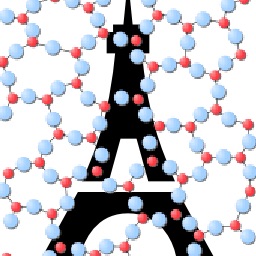Atomistic origin of the passivation effect in hydrated silicate glasses
When exposed to water, silicate glasses and minerals can form a hydrated gel surface layer concurrent with a decrease in their dissolution kinetics—a phenomenon known as the “passivation effect.” However, the atomic-scale origin of such passivation remains debated. Here, based on reactive molecular dynamics simulations, we investigate the hydration of a series of modified borosilicate glasses with varying compositions. We show that, upon the aging of the gel, the passivation effect manifests itself as a drop in hydrogen mobility. Nevertheless, only select glass compositions are found to exhibit some passivation. Based on these results, we demonstrate that the passivation effect cannot be solely explained by the repolymerization of the hydrated gel upon aging. Rather, we establish that the propensity for passivation is intrinsically governed by the reorganization of the medium-range order structure of the gel upon aging and, specifically, the formation of small silicate rings that hinder water mobility.
